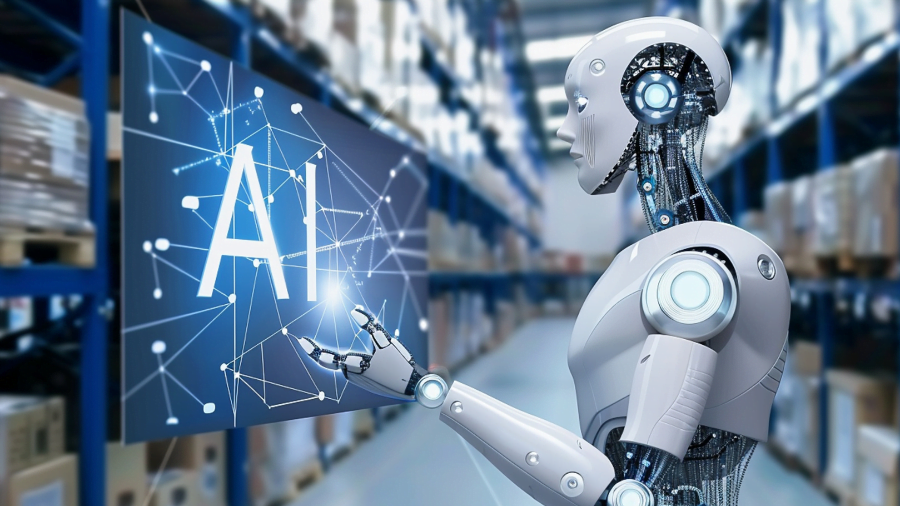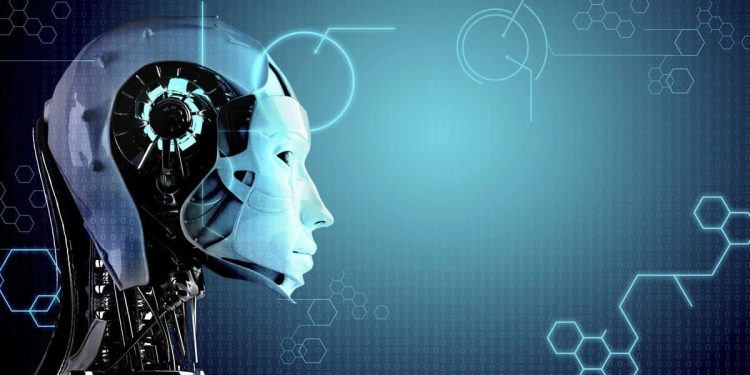Introduction: The Next Frontier of Robotics
The integration of Artificial Intelligence (AI) with biomimetic robotics is transforming the landscape of robotics, ushering in a new era where robots are not just tools but intelligent entities capable of autonomous decision-making and complex problem-solving. Biomimetic robots, which are designed to replicate the behaviors, structures, and systems found in nature, have already demonstrated impressive abilities in various fields such as search and rescue, healthcare, manufacturing, and space exploration. However, when combined with the processing power and learning capabilities of AI, these robots gain a new level of autonomy, intelligence, and adaptability.
The convergence of AI and biomimetic robotics holds tremendous promise in addressing challenges that require both complex decision-making and the ability to adapt to changing environments. This synergy enables robots to operate with higher efficiency, perform tasks in unstructured or hazardous environments, and collaborate with humans in dynamic and unpredictable situations. In this article, we will explore the convergence of AI and biomimetic robotics, its impact on the development of smarter robots, and how this combination is poised to redefine various industries.
1. Understanding Biomimetic Robotics and Its Advantages
Biomimetic robotics refers to robots that are inspired by the structures, mechanisms, and functions of natural organisms. These robots emulate the physical and behavioral traits of animals, insects, or even plants, to perform specific tasks in the real world.
1.1. Design Principles of Biomimetic Robots
- Structural Design: Biomimetic robots are designed to replicate the biomechanics of animals and organisms. For example, soft robotics mimics the flexibility and dexterity found in biological organisms like octopuses or worms. Similarly, quadrupedal robots replicate the movement dynamics of four-legged animals like dogs and cheetahs to enable fast and stable locomotion across various terrains.
- Sensorimotor Capabilities: Inspired by the sensory systems of living beings, biomimetic robots are equipped with advanced sensors (e.g., cameras, LiDAR, and touch sensors) that allow them to perceive their environment, just as animals rely on vision, hearing, or touch to navigate their surroundings.
- Behavioral Patterns: Many biomimetic robots also replicate the decision-making and behavioral strategies of animals. This includes the path-planning algorithms of ants or the swarming behaviors of bees to enable efficient collaboration between robots or autonomous actions.
1.2. Applications of Biomimetic Robotics
Biomimetic robots have shown great promise in performing tasks that are difficult or impossible for traditional robots. Key areas of application include:
- Search and Rescue: Biomimetic robots like robotic snakes or swarming drones are used in search-and-rescue missions, where they can navigate through narrow spaces, unstable terrains, or rubble to locate survivors.
- Medical Robotics: Robots inspired by the human hand, such as soft robotic prosthetics or minimally invasive surgical robots, are improving precision and reducing trauma in surgical procedures.
- Agriculture: Robots that mimic the movement and behavior of animals can be deployed in farming to assist with tasks like crop inspection, weed control, and planting, all while mimicking natural behaviors that do not disrupt ecosystems.
2. The Role of Artificial Intelligence in Enhancing Robotics
Artificial Intelligence is transforming robotics by providing robots with cognitive abilities such as learning, reasoning, and problem-solving. In particular, the combination of machine learning, deep learning, and neural networks allows robots to process vast amounts of data and make decisions based on that information.
2.1. AI-Driven Decision-Making
AI enables robots to make decisions autonomously by interpreting data from their sensors and adapting their behavior accordingly. This includes:
- Real-Time Decision Making: AI allows robots to adjust their actions dynamically based on environmental changes, making them more adaptive and responsive to unexpected situations.
- Pattern Recognition and Prediction: By analyzing data, AI enables robots to recognize patterns and make predictions. For instance, AI algorithms in robotic surgery can analyze medical images to detect potential problems and recommend the best surgical approach.
- Cognitive Reasoning: AI enables robots to reason about their actions and understand the consequences of their decisions, much like how humans think critically before taking action. This capability is essential in tasks that require long-term planning or ethical decision-making.
2.2. Machine Learning and Autonomous Learning
Machine learning algorithms allow robots to improve their performance over time by learning from experience. This means robots can evolve and enhance their capabilities through interactions with their environment.
- Reinforcement Learning: A key aspect of AI, reinforcement learning, allows robots to learn by trial and error. For instance, a biomimetic robot might learn to navigate a terrain by receiving feedback on its performance, refining its behavior to minimize errors and optimize its movements.
- Supervised and Unsupervised Learning: In supervised learning, robots can be trained using labeled data sets, such as images or videos, to perform tasks like object recognition. Unsupervised learning, on the other hand, enables robots to identify patterns without pre-labeled data, giving them the ability to explore and adapt autonomously.
- Swarm Intelligence: Just as groups of animals like ants or birds exhibit cooperative behavior for survival, AI-powered swarm robotics allows multiple robots to work together autonomously to achieve a common goal, such as exploring an unknown area or performing simultaneous tasks.
2.3. Cognitive Robotics and Human-Robot Interaction (HRI)
AI is also essential for human-robot interaction (HRI), enabling robots to understand human intentions, gestures, and emotions. In biomimetic robots, this capability is particularly important, as many of these robots are designed to collaborate with humans or operate in human-centric environments, such as homes or hospitals.
- Natural Language Processing (NLP): AI systems powered by NLP enable robots to understand and respond to human speech. For example, AI-enabled robots can assist in hospitals, helping patients with tasks or communicating with healthcare providers in real-time.
- Social Robotics: Biomimetic robots designed to mimic human social behaviors can help in caregiving roles. These robots can understand human emotions through facial expressions or voice tone and respond empathetically, providing support for the elderly or those with special needs.

3. The Synergy of AI and Biomimetic Robotics: A New Era of Autonomous Machines
When AI is integrated with biomimetic robotics, the resulting systems become exponentially more capable. The synergy between AI and biomimetic robots leads to increased autonomy, learning ability, and adaptive behaviors, which are critical for the next generation of intelligent robots.
3.1. Autonomous Robots with AI-Powered Decision Making
AI-powered biomimetic robots can make real-time decisions without human intervention, making them ideal for complex and unpredictable environments. In industries like manufacturing, logistics, or disaster response, these robots can independently assess the situation, determine the best course of action, and adapt to unexpected changes in the environment.
- Autonomous Navigation: AI enables biomimetic robots to navigate autonomously using real-time sensory data, such as from LiDAR, cameras, and GPS. This is critical for robots operating in dynamic environments like disaster zones, where conditions change constantly.
- Self-Optimization: AI algorithms can continuously evaluate the robot’s performance and adjust its behavior to optimize for efficiency. This allows the robot to improve its performance without the need for constant human supervision.
3.2. Human-Robot Collaboration
The ability of AI to enable sophisticated HRI means that biomimetic robots can work alongside humans to enhance productivity, safety, and precision. This collaborative interaction is particularly significant in environments where robots need to complement human workers, such as in healthcare, construction, or research.
- Assistive Robots: In fields like surgery or rehabilitation, robots can work alongside doctors or therapists, assisting with precise movements or providing rehabilitation exercises. AI allows these robots to learn from each patient’s progress and adapt their behavior accordingly.
- Flexible Manufacturing Systems: In smart manufacturing, robots integrated with AI can adjust their actions based on real-time production data. Collaborative robots can assist human workers by handling dangerous or repetitive tasks, leaving humans to focus on more complex or creative work.
3.3. Enhanced Swarm Robotics
AI’s ability to enable swarm intelligence enhances the capability of groups of biomimetic robots to perform tasks collectively. Just as a swarm of bees can achieve complex tasks such as pollination and hive maintenance, swarm robots can work together to explore, monitor, or transport objects.
- Search and Rescue: In disaster recovery, AI-powered robots working in a swarm can collectively search vast, dangerous areas. Each robot can adapt its behavior based on real-time data, such as thermal readings or gas sensors, to locate survivors or assess damage.
- Environmental Monitoring: Swarm robots can collaborate to monitor environmental factors such as pollution levels, wildlife, or forest health. By working together, they can cover large areas more efficiently than a single robot, collecting data that can be analyzed by AI systems.
4. Challenges and Future Prospects
While the combination of AI and biomimetic robotics presents significant advantages, there are still challenges to address. These include technical limitations, ethical concerns, and the need for reliable communication systems between robots and humans.
4.1. Technical Limitations
Although AI has made tremendous strides, current robots still face challenges in terms of processing power, battery life, and sensor limitations. Future advancements in AI and robotics must overcome these barriers to enable more autonomous and robust robots.
4.2. Ethical Concerns
As robots become more autonomous, questions about their decision-making capabilities, especially in life-critical applications, arise. Ethical frameworks must be developed to ensure that AI-powered robots act in ways that align with human values and priorities.
4.3. The Future of AI and Biomimetic Robotics
The future of AI and biomimetic robotics is promising. Continued advancements in AI algorithms, robotics hardware, and interdisciplinary research will lead to the creation of robots that are not only more autonomous and intelligent but also more capable of performing tasks that require human-like dexterity and cognition.
In the coming years, we can expect to see robots that are increasingly adaptive, collaborative, and efficient, with a growing presence in industries ranging from healthcare to disaster response. The fusion of AI with biomimetic robotics is set to push the boundaries of what autonomous systems can achieve, making these robots indispensable tools for solving complex real-world problems.
Conclusion
The integration of AI with biomimetic robotics is transforming the capabilities of robots, making them more autonomous, intelligent, and adaptive. By emulating the behavior of living organisms and combining this with advanced AI-driven decision-making and learning algorithms, robots can perform increasingly complex tasks without human intervention. As these technologies continue to evolve, they will unlock new possibilities in industries such as healthcare, manufacturing, disaster recovery, and environmental monitoring. With continued research and innovation, the future of autonomous biomimetic robots looks exceedingly promising, and they will play a pivotal role in shaping the future of robotics.











































